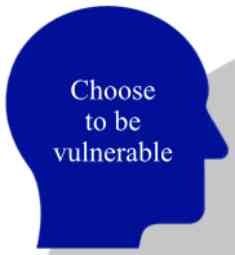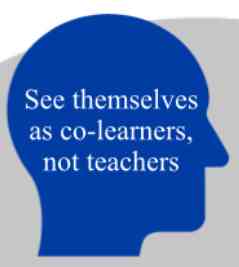Introduction
In the rapidly evolving landscape of 21st-century education, the role of the teacher has undergone significant transformation. Modern teachers are not merely conveyors of information; they are facilitators of learning, guides in the exploration of knowledge, and role models for lifelong learning habits. As the educational environment continues to change due to technological advancements, cultural shifts, and new pedagogical research, teachers must adapt to meet these challenges effectively. This adaptation is characterized by a set of habits and attitudes that distinguish modern educators from their predecessors. They embody qualities such as vulnerability, adaptability, and a commitment to continuous improvement, which are essential in fostering a dynamic and engaging learning environment (Darling-Hammond et al., 2020).
The profile of a modern teacher includes a broad spectrum of attributes that collectively enhance the educational experience for students. These educators see themselves as co-learners rather than mere dispensers of knowledge, allowing themselves to fail and learn alongside their students. They embrace change, step outside their comfort zones, and encourage their students to question everything, fostering critical thinking and curiosity. Moreover, modern teachers believe in the potential for growth in both themselves and their students, advocating for a growth mindset where effort and attitude are seen as key determinants of success (Dweck, 2006). By promoting peer learning and feeling secure in seeking help from colleagues, they build a supportive and collaborative educational community. This holistic approach not only improves academic outcomes but also prepares students to navigate and contribute to an ever-changing world.
In a rapidly changing educational landscape, modern teachers:
1. Choose to be vulnerable

2 Corinthians 12:9 - "But he said to me, 'My grace is sufficient for you, for my power is made perfect in weakness.' Therefore I will boast all the more gladly about my weaknesses, so that Christ’s power may rest on me."
Modern teachers who choose to be vulnerable actively acknowledge and share their own limitations and uncertainties with their students. This openness can significantly impact the classroom environment, fostering a culture of trust and mutual respect. By admitting that they do not have all the answers, teachers model humility and a growth mindset, demonstrating that learning is a continuous journey rather than a finite destination. This practice encourages students to feel comfortable expressing their own doubts and questions without fear of judgment, thereby enhancing their engagement and willingness to participate in the learning process. According to Brown (2012), vulnerability is essential for building connections and fostering an environment where creativity and innovation can flourish. When teachers embrace vulnerability, they show their students that it is acceptable to take risks and make mistakes, which are crucial components of the learning process.
Creating a safe space for students through vulnerability not only supports emotional and social development but also enhances academic achievement. Students are more likely to take intellectual risks, such as attempting challenging problems or presenting novel ideas, when they perceive their classroom as a supportive and non-judgmental environment. Research by Dweck (2006) indicates that a growth mindset, which can be cultivated through practices that include teacher vulnerability, leads to greater resilience and perseverance in students. This approach helps students understand that their abilities can be developed through effort and learning from mistakes. Therefore, when teachers choose to be vulnerable, they are not just sharing their own experiences but are also teaching valuable life skills that contribute to a positive and productive learning atmosphere.
2. See themselves as co-learners, not teachers

Proverbs 27:17 - "As iron sharpens iron, so one person sharpens another."
Modern teachers who see themselves as co-learners rather than traditional authority figures foster a more dynamic and interactive learning environment. This perspective shifts the focus from a one-way transmission of knowledge to a collaborative process where both teachers and students engage in the learning journey together. By positioning themselves as co-learners, teachers encourage a classroom culture where curiosity, exploration, and mutual respect are paramount. This approach aligns with Vygotsky's (1978) theory of social constructivism, which posits that learning is a socially mediated activity. In this model, teachers and students co-construct knowledge through dialogue, questioning, and collaborative problem-solving, making the learning experience richer and more meaningful for all participants.






















